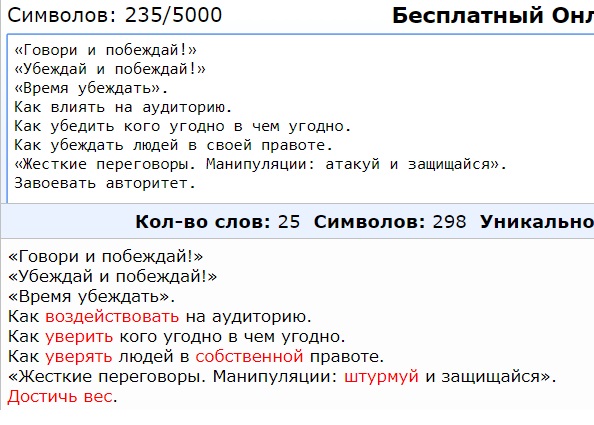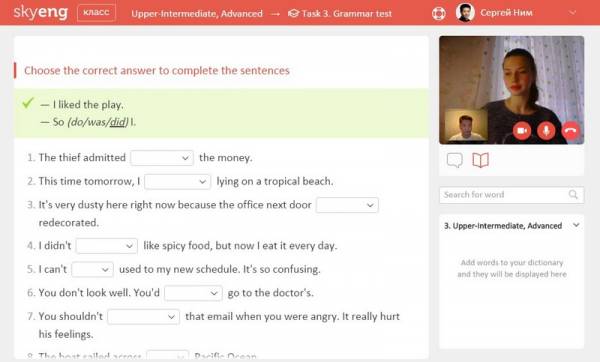Один из лучших методов значительно продвинуться в английском языке – научиться перефразировать.
Союзные слова – «средства логической связи» из критерия К2 при оценивании письменного задания №40 (ранее С1)
Если вы мечтаете вывести свои знания иностранного языка на новый уровень, обязательно освойте перефразирование. Это значит научиться выражать одну и ту же мысль, применяя различные грамматические формы и альтернативные лексические единицы. На международных экзаменах этот метод широко применяется. Зачастую в вопросах к тексту приводятся другие слова и грамматические конструкции, а не те, которые применялись в основном задании.
Если вы составляете эссе или готовитесь отвечать устно, старайтесь выражать свои мысли, меняя первоначальную структуру предложений, приведённых в источнике. Заменяйте лексические группы синонимичными фразами и подбирайте подходящую грамматическую структуру. Если вы претендуете на хорошую оценку, не стоит переписывать тему сочинения. Постарайтесь изложить иными словами. Экзаменационная комиссия рассматривает этот момент отдельно.
Можно перефразировать текст, используя синонимы. Однако это сложный и рискованный путь. Во-первых, не во всех случаях удаётся подобрать синоним, подходящий по контексту. Во-вторых, нужное слово можно попросту забыть. В-третьих, этот метод исключает шанс выиграть дополнительные баллы за владение грамматикой. Для достижения поставленных целей применяйте знания грамматики и подыскивайте альтернативные возможности.
Многие экзаменационные программы (в том числе и IELTS) предусматривают проверку с учётом критерия знания грамматики. Для этого даже предусмотрена отдельная графа «Grammatical Range and Accuracy» — «Ряд применяемых грамматических конструкций».
Владение навыками перефразирования даст дополнительные баллы и поможет выделиться среди тех, кто верно, но при этом однообразно, излагает мысли.
Далее предлагается потренироваться в перефразировании на примере оборотов с союзами.
Союзы и союзные слова английского языка: теория
LINKERS: THEORY / ЧИТАТЬ ТЕОРИЮ
So (that)
We can use so that to express purpose (the reason why someone does something). So that is usually followed by can, could, will or would.
- The police locked the door so (that) no-one could get in.
Infinitive of purpose
We can also use to to express purpose. The subject of the main clause and of the purpose clause must be the same.
- Jack went to England so that he could study engineering.
- Jack went to England to study engineering. (NOT for to study)
If the two subjects are different, we can’t use to. We have to use so that.
- Jack went to England so that his brother would have some help working inthe restaurant.
In order to, so as to
These are more formal ways of expressing purpose.
- Scientists used only local materials, in order to save money.
There are also negative forms: in order not to, so as not to.
- The soldiers moved at night, so as not to alarm the villagers.
For
This describes how something is used.
- This button is for starting the engine.
- This is for the lights.
So, such a
So is used with an adjective or adverb.
- Jim was so tall (that) he hit his head on the ceiling.
- Jim drove so quickly (that) they reached the station twenty minutes early.
Such a is used with adjective + singular noun.
- Helen is such a busy person (that) she never feels bored.
So many, so much, so few, so little
So many/few are used with plural nouns. So much/little are used with uncountable nouns.
- There were so many passengers (that) we couldn’t find a seat.
- There was so much noise (that) I didn’t get to sleep until 3 a.m.
Too/Not enough + to
Too means more than is necessary or good. Not enough means less than is necessary or good. They can both be used with an adjective + to. Compare:
- The bookcase was too big to get down the stairs.
- The bookcase was not small enough to get down the stairs.
Although, though, even though
Although often becomes though in speech. Though can come at the end of a sentence, although cannot.
- Although I asked her, she didn’t come. (speech and writing)
- Though I asked her, she didn’t come. (speech)
- I asked her, (but) she didn’t come, though. (speech)
Even though gives a stronger contrast than although.
- Even though I asked her, she didn’t come. (which was really surprising)
While, whereas
While and whereas are used in formal speech and writing. They compare two facts and emphasize the difference between them.
- While United were fast and accurate, City were slow and careless.
However, nevertheless
However is a way of expressing contrast in formal speech or writing. It can go at the beginning, middle or end of the sentence, and is separated by a comma (or a pause in speech).
- Normally we don’t refund money without a receipt. However, on this occasion I’ll do it.
- Normally we don’t refund money without a receipt. On this occasion, however, I’ll do it.
Nevertheless is a very formal way of expressing however.
- I’m not happy with your work. Nevertheless, I’m going to give you one last chance.
Despite and in spite of
These expressions are followed by a noun (including the -ing form used as anoun), and not by a clause (subject + verb).
- In spite of the rain, we went out. (Although it was raining, we went out.)
- Despite losing, we celebrated. (Although we lost, we celebrated.)





